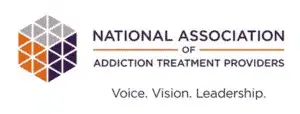Many different kinds of opioids are prescription painkillers. Morphine is one of these potent and highly addictive opioids. If you or a loved one is prescribed morphine, it is important to know the signs and symptoms of morphine abuse and addiction.
What Is Morphine?
Morphine is an opiate pain reliever that is derived directly from the opium poppy. It is frequently prescribed for moderate to severe pain following surgery or pain related to cancer. Unfortunately, morphine also carries the potential for abuse and addiction.
When used illicitly and bought on the street, morphine is known by street names like:
- Dreamer
- Emsel
- First Line
- God’s Drug
- Hows
- MS
- Mister Blue
- Morpho
- Unkie
However, morphine can be legally prescribed by a doctor. Brand names for morphine include:
This Season, Give Yourself the Gift of a Fresh Start.
Whether you are struggling with addiction, mental health or both, our expert team is here to guide you every step of the way. Don’t wait— reach out today to take the first step toward taking control of your life.
- Arymo ER
- Duramorph
- Infumorph
- Kadian
- Mitigo
- MS Contin
Morphine is comparatively weaker than other opioids used for pain like oxycodone and fentanyl. Nonetheless, it is classified by the U.S. Drug Enforcement Administration as a Schedule II controlled substance, meaning it’s a highly regulated drug that has a medical use but a high risk of abuse, dependence and addiction.
Understanding Morphine Addiction
Addiction is a complex medical problem. However, to understand how morphine can lead to addiction, it is important to first know how morphine impacts your brain.
As with other opioids, when someone takes morphine, it binds to mu opioid receptors in the brain. The brain’s reward circuit is also activated. When this happens, your brain is flooded with dopamine. It starts to see whatever incited that stimulus as something to seek out repeatedly. Over time, this can set the stage for addiction.
As a morphine addiction takes hold, the brain often changes in ways that distort both thinking and behavior. These changes can make it hard for a person to stop taking morphine, even if they want to quit the drug.
Tolerance, physical dependence and psychological addiction can all set in as a person struggles with morphine use. Together, they form the basis for addiction.
Tolerance
When you start taking an opioid like morphine, your brain and body adapt to its presence relatively quickly. This process of adapting to the drug’s presence is called tolerance. It means that you need progressively higher doses to get the same effects from the drug that you did at first. As a person’s tolerance to morphine builds, so does the person’s physical dependence on the drug.
Physical Dependence
Physical dependence is another way your body adapts to the presence of morphine. When you are physically dependent on a drug like morphine, it means that your brain expects its presence. If a person who’s physically dependent on morphine suddenly quits taking the drug, your body would be thrown into withdrawal.
Psychological Addiction
When you are psychologically addicted to morphine, it means that the drug has begun to impact your mental health. A primary symptom of psychological addiction is mentally relying on morphine, like being unable to relax or get to sleep without the drug.
Signs of Morphine Abuse & Addiction
As a person begins to struggle with morphine, loved ones may start to notice signs of abuse and addiction. Many of the earliest signs of morphine abuse and addiction are related to the person’s lifestyle and behavior. These signs include:
- Spending a lot of time alone or with new friends
- Avoiding spending time with family and old friends
- Losing interest in previously favorite things and activities
- Hygiene problems (avoiding taking showers, changing clothes or brushing teeth)
- Mood changes
- Appetite and diet changes
- Sleep changes
- Missing deadlines or appointments
- Work, school or legal problems
- Relationship problems with family or friends
- Illegal or risky activities to get morphine
- Unsuccessfully trying to quit morphine
- Making morphine a priority in life
- Using increasingly higher morphine doses
- Faking pain or injuries to get morphine
- “Doctor shopping” between multiple doctors or pharmacies to try to get prescriptions for morphine
- Stealing morphine from friends or loved ones
Effects of Morphine Abuse & Addiction
Over the long term, chronic use of opioids like morphine can lead to multiple harmful effects on a person’s body, mind and well-being. These include the risk of abuse and addiction, which remains high no matter how long a person has been taking morphine.
Physical Effects
Opioids like morphine can have multiple physical effects on the body over the long term. These include:
- Sleep apnea
- Injuries, such as falls
- Constipation
- Sexual problems such as impotence and infertility
- Osteoporosis
- Dry mouth, contributing to dental problems such as tooth decay
- Muscle twitching
Psychological Effects
A person’s mental and emotional state can be harmed by the long-term use of opioids like morphine. Psychological effects from chronic opioid use include:
- Sleep issues, including both excessive sedation and insomnia
- Increased sensitivity to pain
- Depression
- Anxiety
- Apathy
Social Effects
Long-term morphine abuse can take a social and financial toll on a person. Their relationships with friends, family and employers can be harmed from the strain of long-term drug abuse, especially as addiction worsens. Further, morphine addiction can be the cause of legal and financial problems from illicit drug use. In a recent survey of current and past opioid users, among those who used morphine:
- 62% reported morphine impacted their relationships
- 52% reported morphine impacted their careers or jobs
- 55% reported morphine impacted their financial health
- 22% reported a legal impact (incarceration, fines, etc.)
Morphine Addiction Treatment
Admitting that you have a problem with morphine is the first step in recovery and eventually leading a morphine-free life. Many treatment options are available to help you wean off morphine and take steps towards long-term sobriety.
Medication-Assisted Therapy
Medication-assisted therapy (MAT) with methadone and buprenorphine-based products are frequently prescribed to those coming off morphine. These drugs are long-acting opioids prescribed to help you avoid withdrawal symptoms and cravings while also blocking the high of shorter-acting opioids like morphine. While some people may only stay on methadone or buprenorphine for a short period of time, others find that they need to stay on the drugs long-term to avoid seeking out a high from morphine or other opioids.
Medical Detox
Detox is the first step in morphine recovery. During medical detox, you stop taking morphine while being monitored in a medically supervised setting. With constant medical monitoring, the detox team can help you ease off morphine and avoid uncomfortable withdrawal symptoms.
Rehab
Detox can remove morphine from your body, but rehab can help you stay away from morphine long-term. During rehab, you participate in intensive therapy sessions in individual and group settings. During these sessions, you explore why you began to rely on morphine and develop new coping strategies to live life without the substance. Many rehab options are available, including inpatient and outpatient settings. In inpatient rehab, you live onsite at the facility without distractions or impediments to your recovery. In outpatient rehab, you participate in onsite or teletherapy during the day but live at home or in a sober living environment.
Aftercare
Aftercare refers to the extended focus on recovery that helps you stay sober after rehab. Aftercare includes support groups like Narcotics Anonymous as well as sober living environments and continued therapy, if appropriate.
Find the Help You or Your Loved One Needs
It can be scary to realize that you struggle with morphine. However, help is available. Our morphine addiction experts at The Recovery Village at Palmer Lake can help you end your morphine use for good. Contact us today to learn how we can assist you in your road to morphine recovery.









